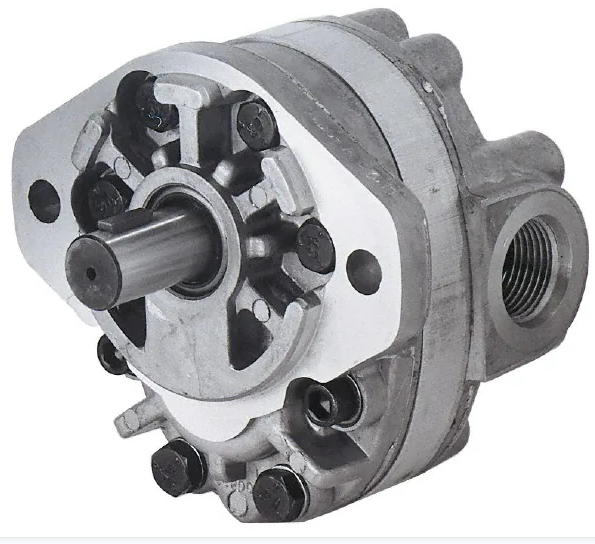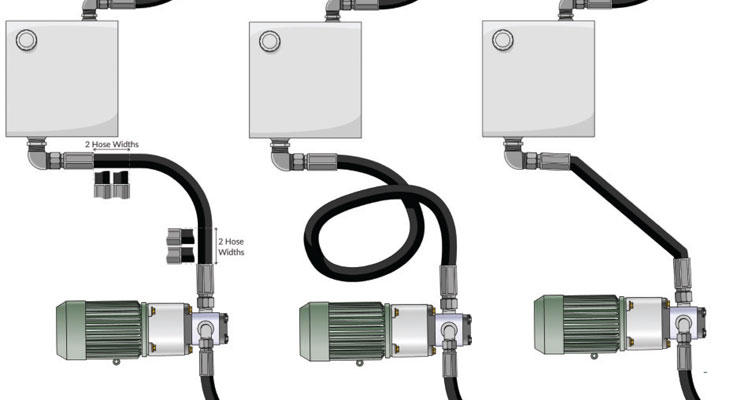When you’re looking to purchase a hydraulic pump for your business, it can be tough to know exactly what size you need. That’s where our hydraulic pump sizing guide can come in handy! By providing you with information on the types of hydraulic pumps and their corresponding sizes, you’ll be able to make an informed purchase that will benefit your business.
What is a hydraulic pump?
Hydraulic pumps are used to move fluids and gases. They are powered by the pressure of the fluid or gas being moved. There are many different sizes of hydraulic pumps, depending on what they will be used for.

Types of hydraulic pumps
hydraulic pumps come in a variety of sizes, each with its own specific requirements. To ensure that you buy the right pump for your application, it is important to understand the different types of hydraulic pumps and their associated requirements.
Common types of hydraulic pumps include reciprocating, rotary, and centrifugal. Reciprocating pumps are typically used for low-pressure applications, such as operating water motors or irrigation systems. Rotary pumps are more commonly used for high-pressure applications, such as pumping fluid from underground reservoirs. Centrifugal pumps are typically used for low-volume applications or when the required pressure is not very high.
To help determine the size of your required hydraulic pump, it is important to consider the following factors: tank size, stroke length, head pressure, and discharge rate. The tank size is determined by the amount of fluid that the pump will be able to hold at any one time. The stroke length is the distance that the pump will travel per cycle (the number of times it rotates). The head pressure is the maximum amount of pressure that the pump can handle before it stalls (the point at which it can no longer produce any more power). The discharge rate is
How to Estimate the Size of a Hydraulic Pump
If you are not familiar with hydraulic pumps, there are a few things you should know before beginning your pump sizing project. A hydraulic pump is an engine that uses fluid pressure to move objects or fluids. The most common type of hydraulic pump is the screw pump, which uses a rotary motion to draw in fluid from a supply reservoir and expel it through a discharge pipe. There are also centrifugal and diaphragm pumps available, which use different pumping mechanisms to move fluids.
When sizing a hydraulic pump, the first thing you need to do is figure out the horsepower (watts) your application will require. This can be done by consulting manufacturer specifications or by using an online horsepower calculator. Once you have determined the horsepower requirement, you can then use the appropriate size of hydraulic pump chart to determine the required size of pump. To help estimate the proper size for your application, you may also want to consider the following factors:
-Pump weight – A heavier pump will require more horsepower to operate than a lighter pump. Pay attention to the power requirements of your application when selecting a pump.
-Discharge port size – Pumps come in different sizes for different applications. Make
Why is the size of a hydraulic pump important?
hydraulic pumps come in a variety of sizes, and the right size depends on your application. It’s important to choose the right size for your application because the wrong size pump can cause damage or failure. Every application is different, so you need to consult with a hydraulic engineer or manufacturer to get an accurate estimate of the size pump that’s needed.
Here are a few factors you should consider when choosing a pump size:
– The horsepower required: A smaller pump will require less horsepower to operate than a larger pump.
– The pressure required: A higher pressure pump will require more horsepower to operate than a lower pressure pump.
– The number of stages: More stages means more fluid can be transmitted at one time. However, a larger pump will require more horsepower to operate than a smaller one with the same number of stages.
– The discharge height: A higher discharge height means less effort is required to move the fluid through the system. However, a larger pump will require more horsepower to operate than a smaller one with the same discharge height.
How to find the right pump size based on flow rate
If you’re unsure of what size hydraulic pump to buy, start by calculating the flow rate required. This will help you determine the correct pump size. To do this, measure the desired output pressure in PSI and multiply it by the displacement (in inches) of the pump you’re considering. For example, if you need a pump with a flow rate of 2,000 PSI and a displacement of 12 inches, your calculation would be 12,000 PSI x 2,000 PSI = 24,000 PSI.
How to size a hydraulic pump
There are many factors to consider when selecting the correct hydraulic pump for your application. Here are some tips to help you size your pump:
-The horsepower required: The horsepower required for the job will affect both the size and type of pump needed. Generally, pumps with higher horsepower ratings require larger motors, while lower-powered pumps can be powered by smaller motors.
-The fluid flow: The fluid flow required will also affect the pump selection. High-flow applications require larger pumps with higher pressure ratings, while low-flow applications may benefit from a smaller, lower-pressure pump.
-The motor type: Many pumps come in either direct-drive or gearbox types. Direct-drive pumps are simpler and faster to install, but they tend to require a more powerful motor. Gearbox pumps are more reliable and easier to operate, but they can be less powerful.
When sizing a hydraulic pump, it’s important to consider the specific application and requirements for the task at hand. With these tips in mind, you’ll be able to select the correct pump for your needs – ensuring a safe and successful project every time!

How do I calculate the size of my hydraulic pump?
There are a few methods you can use to calculate the size of your hydraulic pump. One way is to use the displacement (volume) of the cylinder you’re using. Another way is to measure the required horsepower and multiply that by the stroke length of the pump.
What are the steps to calculating the required size of a hydraulic pump?
Pumping requirements for hydraulic systems vary depending on the type of operation and the nature of the fluid being pumped. However, all hydraulic systems require a pumping capacity that is specific to the application. For example, a pumping requirement for a water softener system may be 5 gallon per minute (GPM), while a pumping requirement for an oil refinery may be 100,000 GPM. The following are four steps that can be used to calculate the required pumping capacity:
1. Determine the required throughput. This is the total amount of fluid that will be pumped over a given period of time. For example, if 10,000 gallons of fluid needs to be pumped every day and it takes 4 hours to pump that amount of fluid, then the required throughput is 40,000 gallons per day.
2. Calculate the required head pressure. This is the pressure necessary to move the liquid through the system. The required head pressure may be determined by multiplying the required throughput by the desired discharge rate (in gallons per minute).
3. Calculate the horsepower (or motor power) needed to achieve that pressure. This measurement is often expressed in terms of watts (W).
How do I know what size hydraulic pump I need?
Finding the right hydraulic pump for your project is essential to ensuring a successful outcome. Here are a few tips to help you identify the right size pump for your needs:
-First, consider the task at hand. Are you installing a small hydraulic pump for routine maintenance tasks, or are you installing a large hydraulic pump for a more complex project?
-Next, estimate the volume of fluid that will be pumped. This information can be found in the project specifications or by using an online hydraulic pump sizing calculator.
-Finally, choose a pump based on the estimated volume and the task at hand. For example, a small hydraulic pump may be ideal for routine maintenance tasks while a larger pump may be better suited for more complex projects.
Conclusion
If you’re looking to purchase a hydraulic pump, it’s important to have a basic understanding of the different size pumps and what they are used for. This guide will help you determine the right size pump for your needs.
How do I know what size hydraulic pump I need. please click topkitparts see more
